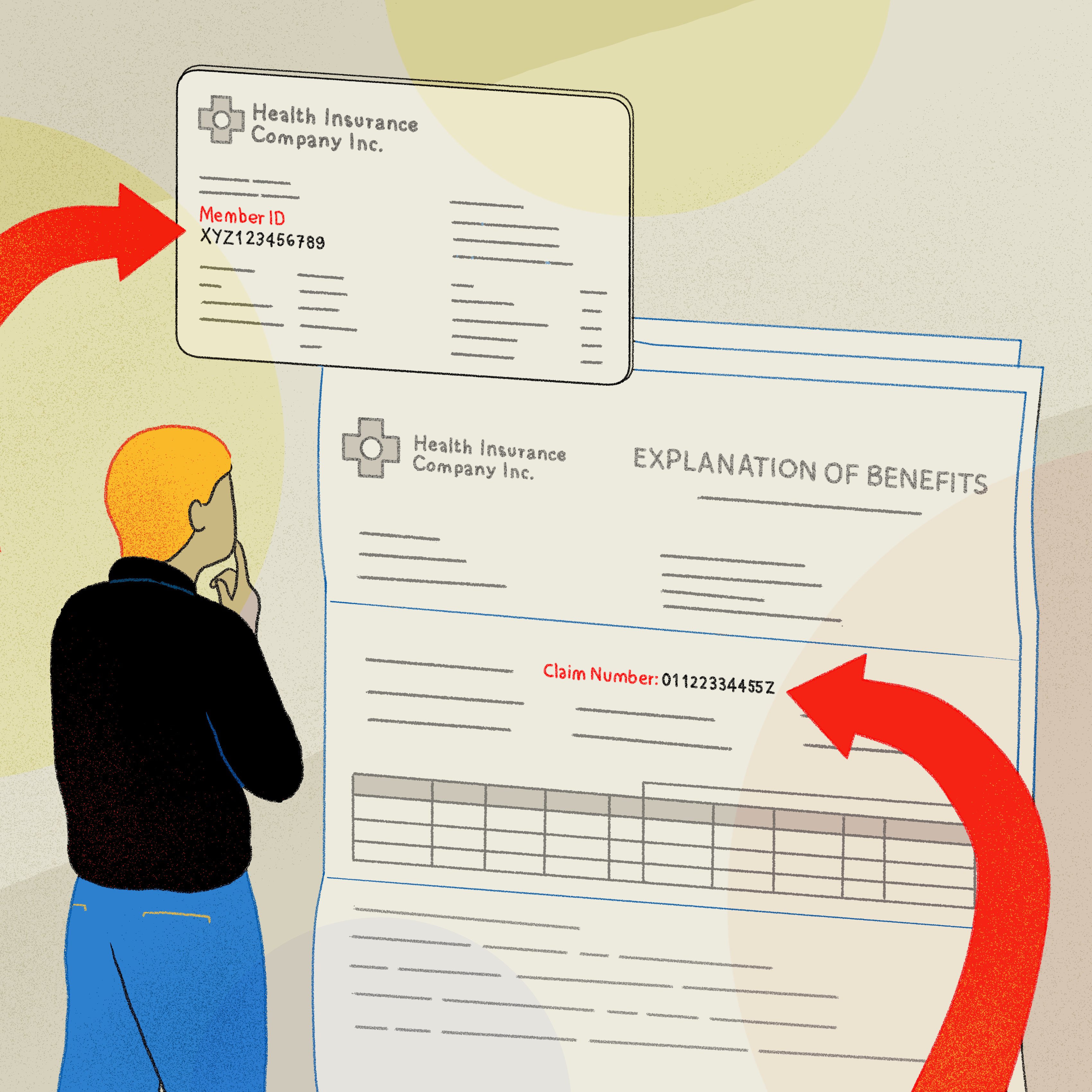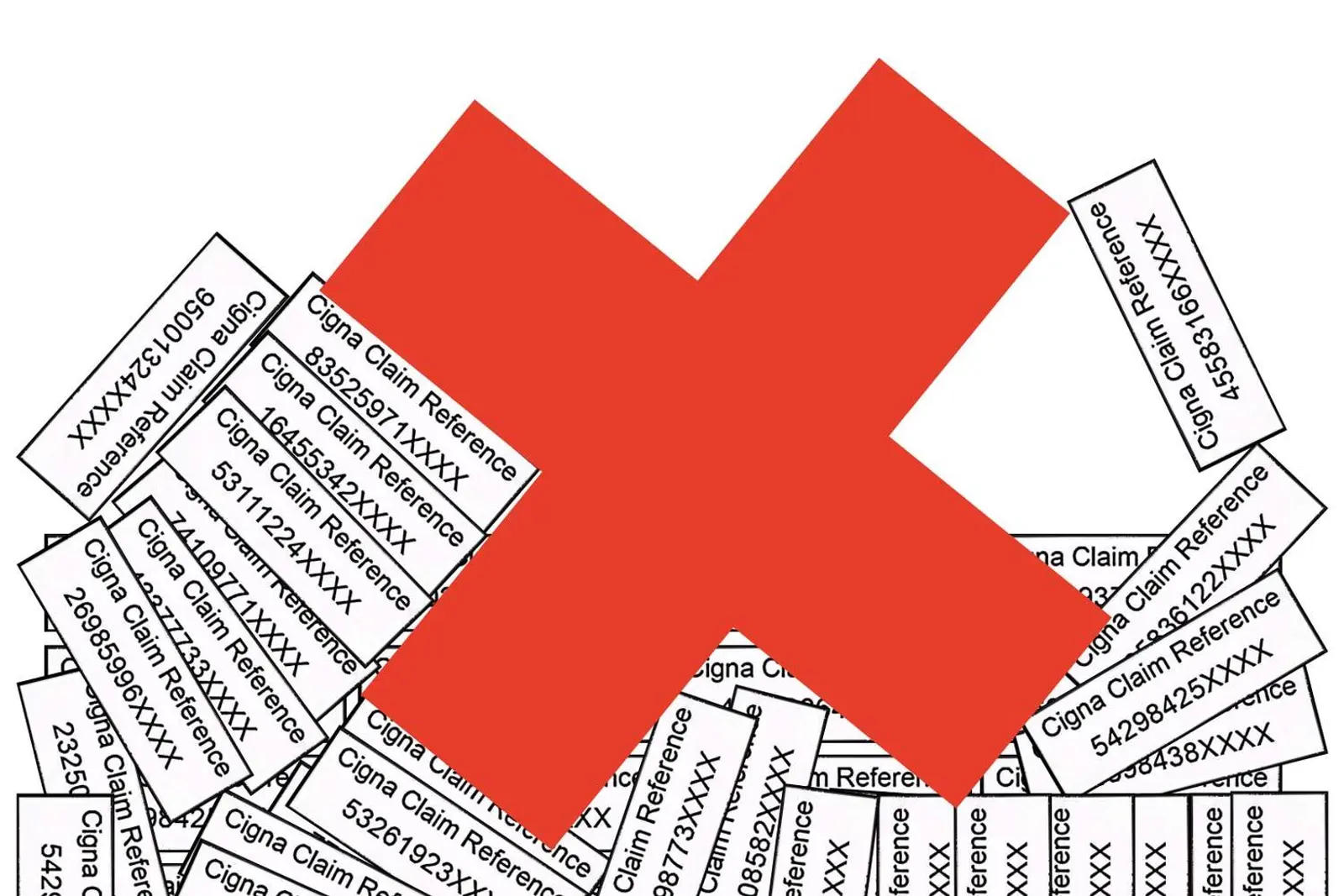1Gather your information
You will need the following information to fill out your claim file request:
You will be able to add more specific information about your claims, such as the claim amounts, dates of service and dates of approval or denial. Find these in the aforementioned letters from your insurer. You can also get this information from your insurer’s online portal or by calling its member services line.
You can also fill out a claim file request on behalf of someone else if you are a parent, guardian or authorized representative of the patient.

2
ProPublica does not store any information you enter into this form without your consent. You will be given a choice below about whether to share your contact information and insurance plan name with us. This is completely optional. If you consent, your information will only be used to help us further report on health insurance denials, and ProPublica will not publish or share your information without first following up with you. Please note that ProPublica is unable to provide any legal advice about claim files. We are journalists and not lawyers.
Let’s check your eligibility.
Contact Information
Insurance
Denied Claims
Approved Claims
Information to Request
Sharing Your Information With ProPublica
3Submit your request
How do I find my insurer’s mailing address or fax number?
Mailing addresses and fax numbers vary by insurer and it is not always obvious how to find this information. We’ve listed some mailing addresses and fax numbers below for a few of the country’s largest health insurers.
P.O. Box 14463
Lexington, KY 40512
P.O. Box 659403
San Antonio, TX 78265-9403
P.O. Box 188014
Chattanooga, TN 37422
P.O. Box 14546
Lexington, KY, 40512-4546
P.O. Box 30573
Salt Lake City, UT 84130-0573
Note: While we have confirmed the information above, some companies administer subsidiary health plans that may require different mailing addresses or fax numbers, so you may want to double check whether the address is the right one for your specific plan.
If your insurer is not listed above, here are a few ways you can figure out where to send your request:
- Call your insurer’s member services line and ask how to submit a request for information related to your denied claims. If the representative doesn’t seem familiar with the topic, ask them to refer you to the HIPAA unit, which is under the legal department, or to the appeals unit. Staff working in these departments should know how to handle claim file requests.
- Check if your insurer has an official claim file request form and, if so, look for a return address or fax number. For example: Cigna’s official form for accessing protected health information lists the necessary contact information.
If you’re still having trouble figuring out where to send your request, patient advocates and legal experts recommend sending it to the insurer’s HIPAA or appeals unit because employees there often understand the process best. You can find this information by:
- Searching “HIPAA unit mailing address” or “appeals department mailing address” with the name of your plan.
- Searching for your plan’s appeal form, which often includes the contact information of the appeals department.
- Calling your insurer’s member services line and asking for the mailing address or fax number of the appeals department or HIPAA unit.
Can I submit my request online?
Maybe. Most plans ask that you mail or fax your request. Some insurers allow people to upload their request through an online portal or through email. If you submit online, you can call your member services line to confirm that the insurer is working on fulfilling it.
4What happens next?
You should get a response to your claim file request within 30 days of the insurer receiving it.
The response from your insurer should give you insight into the evidence the company considered when deciding to deny your claim or prior authorization request. It is important that insurers respond promptly to give patients enough time to meet appeal deadlines, but in practice, ProPublica has found that some insurers can be unresponsive. Many people we interviewed have received their claim files anywhere from one to three months after submitting their requests, while some haven’t gotten them back at all. In some cases, you can sue your health plan provider if they fail to produce the claim file.
If you do not receive your claim file within 30 days, read this portion of our “Other Questions” section: “I submitted my request but am having trouble getting my claim file. What can I do now?”
What do I do once I get my claim file?
The claim file should include more information on why your health insurance claim or prior authorization request was denied. Many people use this information to craft an appeal if their claim or request for treatment was denied, particularly if they notice errors in the decision-making process for their case.
You can also share your claim file with ProPublica reporters as we continue to report on health insurance denials. These documents can help provide a unique window into the denial process. Share your claim file with ProPublica here.
Knowing how to navigate the claim file request process can help people successfully appeal denials. Consider sharing Claim File Helper with your communities.


